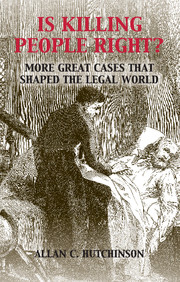As part of my guest blogging this month about the research in my new book
Litigating Across the Color Line, I'm sharing excerpts from some of the archival case files of civil cases involving African Americans that I feature in my book. During the next few weeks, I'll also be sharing additional case file excerpts that could be used for teaching on my personal website,
www.melissamilewski.com.
Today, I'm sharing an excerpt from the Kentucky case of
City of Harrodsburg v. Sallee, which is
featured in Chapter 7, my chapter that examines African Americans' personal injury cases against white southerners between 1900 and 1920. You can read more about the case in my
recent post on the Black Perspectives website. Here is a brief excerpt from the archival record of the case:
"
City of Harrodsburg v. Sallee, 142 Ky. 829 (1911)
 |
| Courtesy Kentucky Dept. for Libraries and Archives |
Petition: Rebecca Sallee Plaintiff vs. City of Harrodsburg Defendant
The Plaintiff Rebecca Sallee states that the Defendant City of Harrodsburg is a corporation duly organized under the laws of the State of Kentucky, and by the terms of its charter authorized and empowered to make contracts, to sue and be sued and to do all things necessary or pertaining to such a corporation, that by virtue of the laws under which it is incorporated the Defendant is and was at the times of the matters hereinafter complained of required to keep its side-walks and other public ways free from obstructions of every kind and in a reasonable safe condition, for the use of persons using and traveling thereon.
Plaintiff states that on the 7th day of October 1909 and for sometime prior thereto therewas, in or near the edge of the pavement on side-walk on the East side of College Street in front of lot of Chas. S. Vanarsdall a hole dug the depth of about two feet, and on the pavement was piled dirt, brick and piping making a dangerous and unsafe condition of said side-walk for the traveling public, that said obstruction were known by the defendant, its officers and agents, negligently suffered and permitted said hole and dirt heap to remain on said sidewalk for a considerable time, up to and including the night of October 7th 1909, when the injury hereinafter complained of occurred.
Plaintiff states that while said side-walk was thus obstructed to-wit, on the night of October 7th 1909, while the plaintiff was using said side-walk and was traveling thereon, from her home on Cornishville, street to the town, and without fault on the part of the Plaintiff, she stumbled over the said pile and heap of dirt, brick and piping and fell over same into the hole, whereby her limbs and body, were bruised and hurt and her back was wrenched and injured, producing thereon a large lump, and so violently wrenching, straining and spraining, plaintiff’s limbs and body, and by the shock to plaintiff’s nerves her kidneys were caused thereby to be disturbed and diseased and by reason of said fall and consequent injury as stated, plaintiff suffered great bodily pain and mental anguish, and has sustained loss of time and labor and was compelled to incur indebtedness for medical aid and attention, and her power to earn money has been permanently lessened. All of which was without the fault of plaintiff and was because of the negligence of defendant and to the damage of Plaintiff in the sum of Fifteen Hundred dollars.
Wherefore she prays judgement against the defendant for said sum of Fifteen Hundred Dollars, for her costs herein and for all proper relief.
B.F. Roach, Attorney for Plff.
______________________________________________
Official Stenographer’s Report of Testimony.
Be it remembered that on the trial of the above action at the May term 1910, of the Mercer Circuit Court, the Plaintiff testified on her own behalf and introduced witnesses on her behalf, as follows:
Rebecca Sallee, Examined by Atty for Plff.
1-Q- Where do you live?
Ans – On Cornishville pike.
2-Q- What is your age?
Ans – I was born in 1862.
3-Q- You are the wife of Jim Sallee?
Ans- Yes sir.
5-Q- And how many children have you?
Ans – Sixteen
6-Q- Where do you work?
Ans – For Mr. C.D. Thompson.
7-Q- What position did Mr. Thompson occupy in the City of Harrodsburg during last year.
Ans – He was Mayor of the City.
In an important addition to the series, this book tells the story of 20 leading revenue law cases. It goes well beyond technical analysis to explore questions of philosophical depth, historical context and constitutional significance. The editors have assembled a stellar team of tax scholars, including historians as well as lawyers, practitioners as well as academics, to provide a wide range of fresh perspectives on familiar and unfamiliar decisions. The whole collection is prefaced by the editors' extended introduction on the peculiar significance of case-law in revenue matters. This publication is a thought provoking and engaging showcase of tax writing that is accessible equally to specialists and non-specialists.







